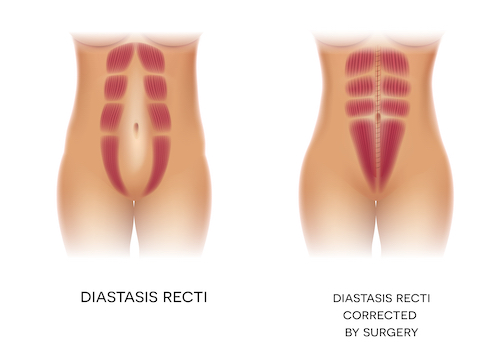Winter is the Perfect Time for a Tummy Tuck
If you’ve been thinking about giving your mid-section a makeover, winter is the perfect time for a tummy tuck. It takes up to eight weeks to heal from a tummy tuck (also called an abdominoplasty). Having a tummy tuck done during the winter months allows you to conceal your incision line and any swelling with loose shirts and sweaters while you heal. That way, when summer rolls around, you’ll be able to flaunt your newly contoured abs in a bikini.
Is a Tummy Tuck Right for You?
Many of my patients who want a tummy tuck are moms who have finished having kids. They want their old body back, sans the excess skin and fat that may have accumulated as a result of pregnancy. In fact, many of these women decide to give their entire body a mommy makeover, having breast surgery done in addition to a tummy tuck.
Sometimes patients will also have other problems fixed during a tummy tuck. This includes an umbilical hernia (a hernia in the belly button that’s common after pregnancy) and/or diastasis recti. This is the term for ab muscles that split during pregnancy causing a rounded abdominal pooch. Diastasis recti can’t be corrected with crunches—no matter how many you do!
If a patient is having diastasis recti fixed during a tummy tuck, I will pretreat her with muscle relaxants before the surgery. I also have her take them after the surgery as well. The muscle relaxants make the post-op recovery much more comfortable.

Diastasis recti, or separated ab muscles, commonly occurs during pregnancy. A tummy tuck is the only way to surgically correct this.
Tummy tucks are not just for moms or women, however. Men can and do have tummy tucks too, wanting to have flat abs and get rid of excess fat around their middle. In fact, tummy tucks were one of the top five cosmetic surgery procedures performed on both men and women in the past year, according to the American Society of Plastic Surgeons.
A tummy tuck is an extremely successful procedure that can sculpt your midsection and flatten your abs. The results last long term, provided you don’t gain or lose a lot of weight.
What’s Involved In a Tummy Tuck
A tummy tuck is a two-to-three-hour surgical procedure, done under general anesthesia. The surgery is done in my accredited operating room, and you’re able to go home the same night. This is both safe and most comfortable for patients.
A tummy tuck involves making an incision (hip-to-hip or shorter, depending on exactly what’s being done) just above the pubic hair line. This allows the scar to be easily concealed by underwear and/or a bikini bottom. Once this incision is made, I remove excess skin and fat and tighten weak fascia. (Fascia is the connective tissue underneath the skin that attaches to and stabilizes the ab muscles.) As mentioned, I will also correct an umbilical hernia and diastasis recti, if these are a problem. Then I reposition the belly button and the remaining skin to create a more toned, natural look. The belly button is visible if you wear a bikini, why a natural-looking belly button is important.
Post-surgery, patients go home with drains. (These are small tubes to remove any fluid from the area that might accumulate). Typically the drains are removed after five to seven days.
The great thing about being at home during your recovery is that you’ll be able to walk around and get a good night’s rest sleeping in your own bed. I do recommend that patients move a little bit each day to keep blood flowing, which facilitates healing. I also advise that tummy tuck patients sleep on an incline with knees bent over a pillow for the first week. This “beach chair” position reduces the feeling of pulling in the lower abdomen.
Most patients take off two weeks from work, though, occasionally some go back to work after one week. Patient usually return to driving after two weeks, too, but cannot do any exercise or lift anything heavy for six weeks. This includes vacuuming and doing the laundry (which is a good thing!). This is why it’s important to have someone around to help you post-surgery.
I encourage patients to wear an abdominal girdle 24/7 for six to eight weeks. This gives support to the abdomen and helps you feel secure and stable. The incision in the lower abdomen will fade with time.
A tummy tuck can give you the flat midsection you want, but it takes some time to heal, why I recommend having a tummy tuck done during the cold-weather months. Winter is the perfect time for a tummy tuck so you can conceal as you heal.
Back to blog